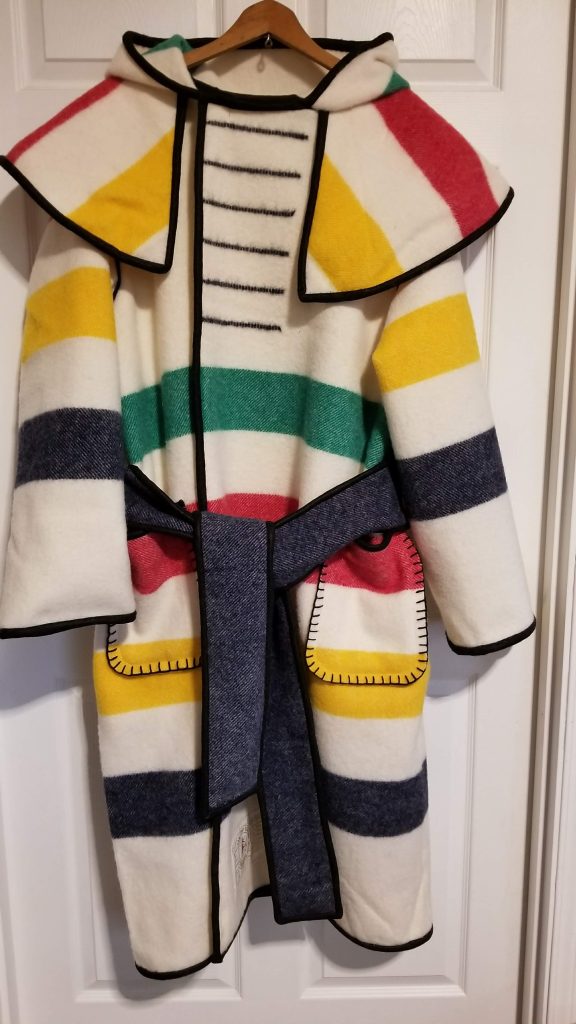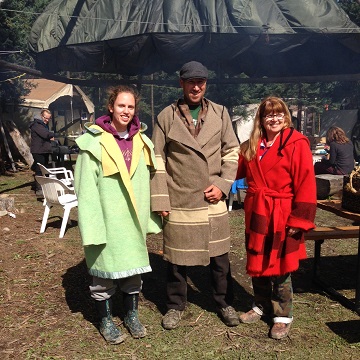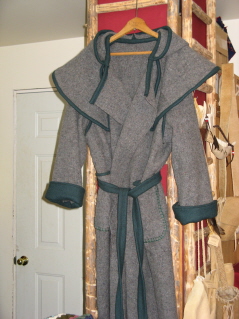Come and create a capote (blanket coat). You will need to supply a blanket for your capote. Please make sure it measures close to 68 inches wide but a bit wider is better. Traditionally the capote was created with a wool blanket but other blankets can be used for the capote, although they will not be as warm. If you are not sure about what blanket to bring, please give me a call.



This is a 2 day class, the first day will have the basic sewn coat done but then you will need to add pockets, trim, etc. 2 trims are included with class. Basic welting colors (Black, white, red, green, blue, needles, thread are supplied. If you wish to add other trims like leather or fur, please bring them with you.
First Class 10:00 – 5:00.
Second Class 10:00 – 2:00
Cost: 75.00 per person minimum of 6, maximum of 10.
You are welcome to camp out the night between the course days, this is included in the cost of the class. Please come self contained with your shelter and food. Water will also be provided. Cooking over a fire can be done at the main campfire or you can bring your camp stove. If you wish to use one of the shelters or rent the cabin at the course location, please visit the Rental page or contact us.
If you have a group who wish to book a Capote Making Class or any other class, please give us a call to make arrangements. We offer may different class subjects. Please visit the Karamat Experiences page to see all possible classes.
History of the Blanket Capote in North America
The capote, or long greatcoat, has long been closely associated with the fur trade in North America. It is not surprising that the wide-scale harvesting of furs for European markets coincided with the development of this uniquely Canadian garment. Indeed the capotes, or more specifically the wool blankets from which they were sewn, became one of the most sought after trade items, replacing furs as the typical winter clothing for both the native and European trappers and traders alike.
Origins of the Capote
The capote came to be associated with the Hudson’s Bay Company and is sometimes referred to as the “Hudson’s Bay coat.” But it is also more generally associated with the French habitants and voyageurs, as it originated in New France. The term “capot” or “capote” comes from the French word for cloak. “Capote” is a term used in North America since the early 1600s when French sailors were trading their coats with the Micmac on the Atlantic coast. Pierre Radisson (1636-1701) mentions wearing a “cappot” or “capot” in his autobiographical journal long before any Hudson’s Bay Company records mention such an item.
These popular style coats were standard issue during the French and Indian War and the American Revolution and many times were made by the soldiers from issue blankets. By the mid-19th century, the popularity of the Capote had spread westward with the fur trade and it was commonly seen in use by the Indians of the Northern Plains, Rocky Mountains and Columbian Plateau. There were also many commercially made Capotes available. For instance, in 1824, a St. Louis newspaper carried an ad from an outfitter listing “Red Blanket Coats for Sale”.
